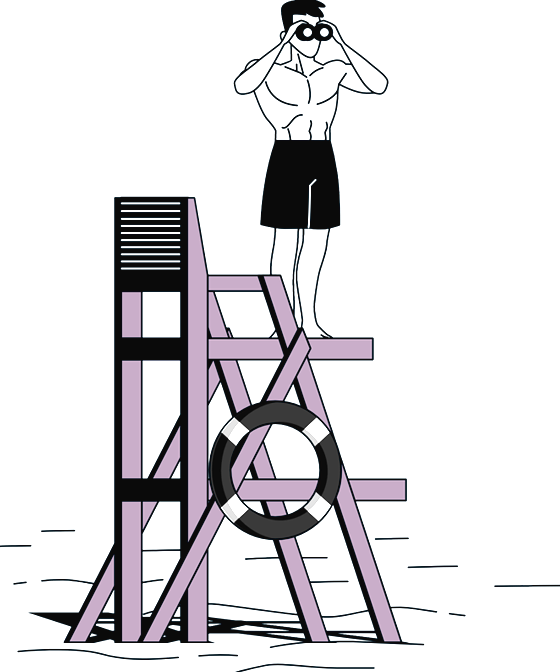FAQs
Frequently asked questions
Where will I get my unique ID?
Your unique ID will be sent to your email address which was provided at the time of booking Nadi Tarangini.
How do I install the Desktop version?
Go to Downloads and Install Java /NT application -> Extract File -> Create NT folder on D drive – >Save Right click on Nadi Tarangini file -> click on send to desktop -> Double click on desktop shortcut -> Insert your username & password -> Use Nadi Tarangini software.
Why has Nadi Tarangini suddenly stopped responding?
To ensure Nadi Tarangini starts responding again, please clear the background application.
What is the Mobile Configuration required?
Please use Mobile Android version 5.0 .
What is the Desktop Configuration?
Please use 64 Bit Processor and operating system, Windows 7 and above ( Windows should be updated), 4 GB Ram. Please ensure that your Default Browser is Google CHROME.
Can the Desktop application be used offline?
No, the desktop application cannot be used offline.
When does synchronization need to be done?
Synchronization has to be done after 7 days or after 20 patients, whichever comes early.

DEVELOPMENT FAQ

Who all were involved in development of Nadi Tarangini?
1. The work started with renowned Nadi Vaidya Ashok Bhat from Pune in 2005.
2. More than 20 Doctors were involved in providing domain expertise and in the data collection process including Dr. Tejaswini Bhale (Pune), Dr. Dharmendra Patel (Gandhinagar Ayurvedic Hospital), Dr.Mahendra Pate (Pune), Dr. Swati Tikekar (NCL Pune), Dr.Dattatraya Girge (Shri Ayurved Hospital), Dr. H. R. Nagendra (S-vyasa, Bangalore), Dr. Pooja More (S-vyasa, Bangalore), Dr. Kiran Ambekar (Mumbai), Dr. Dinesh Panchbhai (Nasik), Dr. Nitin Pandav (Nasik), Dr.Vishwas Jategaonkar (Pune), etc. There were also inputs from many other Vaidyas who were not officially involved.In the next phase of development, many renowned doctors have agreed to help (we are in the process of signing an MOU with them).
2. More than 20 Doctors were involved in providing domain expertise and in the data collection process including Dr. Tejaswini Bhale (Pune), Dr. Dharmendra Patel (Gandhinagar Ayurvedic Hospital), Dr.Mahendra Pate (Pune), Dr. Swati Tikekar (NCL Pune), Dr.Dattatraya Girge (Shri Ayurved Hospital), Dr. H. R. Nagendra (S-vyasa, Bangalore), Dr. Pooja More (S-vyasa, Bangalore), Dr. Kiran Ambekar (Mumbai), Dr. Dinesh Panchbhai (Nasik), Dr. Nitin Pandav (Nasik), Dr.Vishwas Jategaonkar (Pune), etc. There were also inputs from many other Vaidyas who were not officially involved.In the next phase of development, many renowned doctors have agreed to help (we are in the process of signing an MOU with them).
What are the validations that Atreya has done so far?
Atreya collected Nadi patterns of 25,000 patients from 20 different locations along with inputs from different Vaidyas. The data and inputs varied based on their involvement, language, input method, subjective output parameters and so on. Finally, when we collated all the data, we applied fuzzy logic on the same to arrive at a certain level of ground truth with the help of a core group of Vaidyas.
What do you mean by constant ‘upgrades’ in Nadi Tarangini?
The first version of Nadi Tarangini was launched in December 2016, and we have over 100 doctors using it. We also have an internal team of doctors/domain experts who provide inputs in Nadi Tarangini’s development.
Our customers/doctors provide us with valuable feedback on the user-friendliness of the software and the report. Also, the medical and Nadi data is gathered at the centralized server time to time. As the data size increases at the server, the data-driven artificial intelligence improves :
1. The intelligence and pulse report becomes more optimized for the same set of rules.
2. As the local data size increases, the intelligence and pulse report becomes more localized. E.g. If more doctors from Indore start using Nadi Tarangini, the pulse report will start displaying trends of disorders and subjects from Indore.
The in-house research team of domain experts and scientists is constantly working on new Ayurvedic parameters, new data and have scheduled their additions to the pulse report. Therefore, the Nadi Tarangini software and report is constantly evolving. Every timely upgrade is an improvement from the previous version, in terms of software, pulse report output parameters and their optimization.
Basis the above process, we have released our first upgrade in June 2017 – in which many new features have been added to the software and the report. The report is also much more comprehensive – 11 pages from the 4 page one earlier.
1. The intelligence and pulse report becomes more optimized for the same set of rules.
2. As the local data size increases, the intelligence and pulse report becomes more localized. E.g. If more doctors from Indore start using Nadi Tarangini, the pulse report will start displaying trends of disorders and subjects from Indore.
The in-house research team of domain experts and scientists is constantly working on new Ayurvedic parameters, new data and have scheduled their additions to the pulse report. Therefore, the Nadi Tarangini software and report is constantly evolving. Every timely upgrade is an improvement from the previous version, in terms of software, pulse report output parameters and their optimization.
Basis the above process, we have released our first upgrade in June 2017 – in which many new features have been added to the software and the report. The report is also much more comprehensive – 11 pages from the 4 page one earlier.
USAGE FAQ
Which Ayurvedic texts is Nadi Tarangini based on?
We have referred to many ancient texts for understanding the basics of Nadi Parikshan and not just a single one. For e.g. Sharangadhara-Samhita, Bhavaprakash, Yogaratnakara, Kanada’s Nadi-Vijnana, Ravana’s Nadi Pariksha.Vaidyaraj Ashok Bhat from Pune has played a pivotal role in the conceptualization of Nadi Tarangini. Currently, we have our own panel of domain experts and advisors who provide inputs and mentor the team from time to time.
Traditional Nadi Pariksha methodology is very subjective. How do you claim that you have reached 85% accuracy? How have you arrived at that benchmark?
We understand that the traditional Nadi Pariksha methodology is very subjective and many times different Vaidyas have different opinions about the same patient. The subjectiveness is due to the difference in the concentration and feeling/touch information of Vaidyas, their Guru parampara teaching methods, and their own experiences.
In our prototyping studies, we collected data from 20 different locations – inputs from different Vaidyas. The data and inputs varied based on their involvement, language, input method, subjective output parameters and so on. Finally when we collated all the data, we applied fuzzy logic on the data (Fuzzy logic is a method developed to handle the concept of partial truth, where the truth value may range between completely true and completely false.) to arrive at certain level of ground truth with the help of core group of research Vaidyas.
From more than 25,000 data patterns that we have received from 20 locations, we have medical information about the subjects, Nadi of the subjects and the inputs given by the doctors. We have validated the data through the computer science method. 85% accuracy refers to Nadi Tarangini’s ability to correctly identify each Nadi pattern/graph as Vata Pitta and Kapha.
Furthermore, the accuracy of the Nadi Tarangini system was tested in the prototyping stage before the launch by 5 practicing doctors in Mumbai and Pune, where 8 or 9 parameters out of 10 matched their manual Nadi outputs. Please note that, as the Nadi Tarangini system is based on artificial intelligence, the accuracy improves as more and more data is gathered in the rules-defining server.
What were the data collection sites in the prototype stage?
Data collection site Primary Vaidya involved in data collection Akhandanand, Ahmedabad Dr. Atul Bhavsar Arogyashala hospital, Nasik Dr. Eknath Kulkarni Bharati Vidyapeeth Ayurved College Dr. Abhijeet Patil BKL Walawalkar Hospital, Dervan Dr. Suvarna Patil Gandhinagar Ayurvedic Hospital Dr. Dharmendra Patel IIT Kanpur Dr. Laxmidhar Behera KLE Ayurvedic Hospital Dr. B. S. Prasad NCL Clinic, Pune Dr. Swati Tikekar Madhavbaug Ayurvedic Cardiac Rehabilitation Center, Khopoli Dr. Gurudatta AminPrakruti Panchakarma Centre, Satara Dr. Suyog Dandekar Private clinic at Coimbatore Dr. Darshan Abhimanyu Private clinic at Mumbai Dr. Kiran Ambekar Private clinic at Nasik Dr. Dinesh Panchbhai Private clinic at Pune Dr.Vishwas Jategaonkar Private clinic at Pune Dr. Ashok Bhat Sane Guruji Arogya Kendra, Hadapsar Pune Dr. Vrinda Kaknurkar Sane Guruji Arogya Mandir, Malegaon Dr. Apashchim Baranth Seth R.V. Ayurvedic Hospital, Sion Mumbai Dr. Nabar Seth Tarachand Ramnath Hospital, Pune Dr. Sadanand Deshpande Shri Ayurved Hospital Dr.Dattatraya Girge SVYASA, Bangalore Dr. H. R. Nagendra

DATA SECURITY FAQ

Why is the data stored on the cloud server?
Data is stored on the cloud server for two reasons:
1. The convenience of the doctors – enables access to their patient’s Nadi reports from anywhere. Patients can also see their report online through their patient login.
2. The Nadi patterns data stored on cloud helps us do more analysis and come up with further upgrades to the report from time to time.
1. The convenience of the doctors – enables access to their patient’s Nadi reports from anywhere. Patients can also see their report online through their patient login.
2. The Nadi patterns data stored on cloud helps us do more analysis and come up with further upgrades to the report from time to time.
Why should doctors share their data?
We need only basic medical information to generate the report – height, weight, chief complaints and prakruti. Apart from that, patients’ personal details like name, email, phone etc. are of no relevance to us.In the app, we have not made any personal patient details mandatory. Those fields are present for the convenience of the doctor so that they can refer to all the patient data at one place. You can choose not to create the patient account also if you wish.
Doctors also tell us that they are willing to share their knowledge (IP), based on their own experience, for the betterment of Ayurveda. If any publication comes out of the joint research, the doctor/clinic/college name appears along with Atreya’s name.
Doctors also tell us that they are willing to share their knowledge (IP), based on their own experience, for the betterment of Ayurveda. If any publication comes out of the joint research, the doctor/clinic/college name appears along with Atreya’s name.
How will this data be used in future by Atreya?
We may use the patient’s non-personal/medical data (E.g. Nadi patterns, blood pressure, medical reports etc.) and other information provided to us for research (behavioral and more advanced studies in our domain). The aggregate information in the research does not identify you/your patients personally. This data can be used for analysis or improvement of our services or for developing further upgrades to the report from time to time. We may also disclose aggregated user statistics in order to describe our services to current and prospective business partners.
TECHNOLOGY FAQ
How can I use this technology in my practice?
Many Ayurvedic doctors (especially younger ones) are not very confident about ‘feeling’ the pulse or distinguishing patterns in the pulse. Nadi Tarangini’s graphs will make it easier for them to observe the variations with ease and will accelerate self-learning. Today’s patients are very inquisitive. They usually like to understand the cause of the disorder, how it has affected their health and what all can be done. With traditional method of sparshana, darshana and prashna; it is not very easy to answer all the questions of the patients. With the visualization of pulse signals and numbers on the report, the ‘conversation’ between the doctor and the patients will be easier.
Will this technology replace doctors?
This technology is a computer-aided system similar to an ECG machine. Any gadget or technology can never replace a doctor. It only helps the diagnosis/treatment process thereby helping the doctor.
How many doctors have tested and found it useful?
In the data collection step, Nadi Tarangini was installed at 20 clinics and hospitals.
In the prototyping phase, 5 doctors used it, and currently, more than 500+ doctors are using Nadi Tarangini.
We have received very encouraging feedback on the accuracy of the report as well as patient satisfaction.
You can read/watch their detailed testimonials in the ‘What Doctors Say’ section on the home page or visit our YouTube channel
https://www.youtube.com/channel/UCybl9xiZD9vL6oJO5cpvARg.


